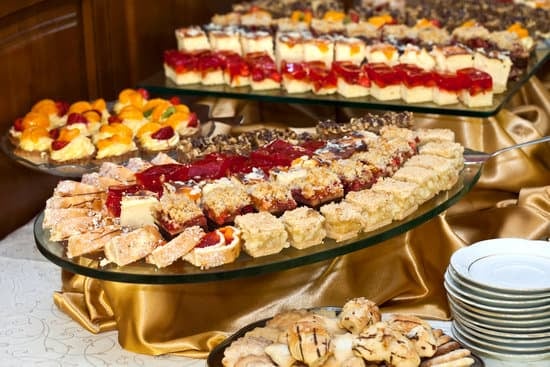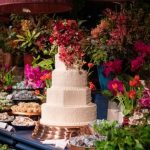What is a Viking wedding? This ancient and rich tradition is steeped in history, culture, and meaningful rituals. Viking weddings are not just a celebration of love and commitment but also a reflection of the heritage and values of the Norse people. In this article, we will explore the fascinating world of Viking weddings, from their historical origins to the modern adaptations that continue to captivate couples around the world.
The concept of a Viking wedding may evoke images of rugged warriors and fierce shieldmaidens, but it encompasses much more than that. The historical and cultural significance of Viking weddings goes beyond simple stereotypes, offering a deeper understanding of Norse customs and traditions. Through an exploration of their history, rituals, attire, location, food, symbolism, and modern adaptations, we will gain insight into the unique beauty and enduring appeal of these ancient marriage ceremonies.
Join us on a journey through time as we delve into the captivating world of Viking weddings. From the origins and symbolism behind key customs to the modern reinterpretations that keep this tradition alive today, there is much to discover about these enchanting ceremonies that continue to inspire couples seeking a wedding with a difference. Get ready to immerse yourself in the magic and meaning of Viking weddings.
History of Viking Weddings
The history of Viking weddings dates back to the early medieval period, during the time of the Norsemen. These weddings were not only a celebration of love and commitment but also held deep cultural and historical significance within Viking society. The rituals and traditions observed during these ceremonies offer valuable insights into the customs and beliefs of the Viking people.
During this time, marriage was viewed as a sacred bond, and the wedding ceremony was considered a crucial event in the lives of individuals. The rituals associated with Viking weddings were rooted in ancient Norse beliefs and customs, reflecting the values and priorities of their society. For example, one of the key traditions was the exchange of swords between the bride’s and groom’s families as a symbol of trust and loyalty.
In addition to symbolic gestures, Viking weddings also involved elaborate feasting, storytelling, music, and dancing. These celebrations were not only an expression of joy but also served as an opportunity for communities to come together and strengthen social bonds. The historical significance of these rituals offers a glimpse into the rich tapestry of Viking culture and tradition.
Viking Wedding Rituals
When it comes to understanding what is a Viking wedding, one must delve into the unique and meaningful rituals that are observed during such ceremonies. These rituals are deeply rooted in Viking culture and tradition, with each having its own significance in symbolizing the union of two individuals. Here are some of the most notable Viking wedding rituals:
1. Exchange of Swords or Weapons: In a traditional Viking wedding, the exchanging of swords or weapons between the bride and groom symbolizes their commitment to protect and defend each other. This ritual represents the strength and unity of the couple as they embark on their journey together.
2. Binding of Hands: The binding of hands, known as handfasting, is a symbolic gesture where the couple’s hands are tied together with a ribbon or cord. This ritual signifies their eternal bond and commitment to each other, emphasizing the idea of being bound together in marriage.
3. Drinking from a Shared Cup: Another significant ritual is the sharing of a drinking horn or cup filled with mead, a honey-based alcoholic beverage. The act of drinking from the same vessel symbolizes the blending of two lives into one and acknowledges both joy and sorrow that may come with marriage.
These rituals not only add depth and meaning to a Viking wedding but also serve as powerful symbols of love, commitment, and unity within Norse culture.
Traditional Viking Wedding Attire
Customary Clothing and Accessories
The traditional attire worn by the bride, groom, and wedding party in a Viking wedding holds significant cultural and symbolic importance. For the bride, a typical ensemble might include a long linen underdress with an apron on top, adorned with brooches and beads.
The groom might wear a tunic with trousers or leggings, along with a cloak fastened with decorative brooches. Both the bride and groom would also wear various accessories such as arm rings, necklaces, and headpieces, often crafted with intricate metalwork.
Symbolism and Cultural Significance
Each element of the traditional Viking wedding attire carries its own symbolism and cultural significance. For example, the use of specific materials like linen, wool, or animal furs reflects the connection to nature and practicality in Viking culture. The intricate metalwork on jewelry and clothing serves as a symbol of status and wealth within the community. Additionally, certain colors and patterns used in the attire may hold personal or familial significance for the couple or their families.
Historical Context
The traditional Viking wedding attire also reflects the historical context of Norse society. The garments are often designed to be functional for daily life in a harsh climate while still allowing for self-expression through intricate craftsmanship. By understanding the historical context of these clothing choices, couples can honor their heritage and pay homage to their ancestors by incorporating elements of traditional Viking attire into their modern wedding ceremonies.
Overall, the attire worn during a Viking wedding not only serves as an outward expression of cultural identity but also carries deep symbolic meaning that pays tribute to centuries-old traditions. Today’s couples may choose to incorporate elements of this traditional attire into their weddings as a way to connect with their heritage and celebrate their love in a unique and meaningful way.
Location and Setting
Viking weddings, rooted in the historical and cultural traditions of the Norse people, often took place in settings that held significance for the couple and their community. The location and setting of a Viking wedding played a crucial role in shaping the overall ceremony and its symbolism. From majestic natural landscapes to communal gathering places, the choice of venue reflected the values and beliefs of the Viking culture.
In ancient times, Viking weddings were often held outdoors, surrounded by the untamed beauty of nature. This choice emphasized the connection between the couple, their community, and the natural world. Whether it was a lush forest clearing, a serene lakeside spot, or a windswept coastal cliff, the outdoor setting underscored the importance of harmony with nature in Viking beliefs.
In addition to outdoor locations, some Viking weddings also took place within communal gathering spaces such as longhouses or mead halls. These venues were significant not only for their practicality in accommodating a large number of guests but also for their cultural symbolism.
They represented unity, strength, and community, reflecting the values that were central to Viking society. Today, modern couples seeking to incorporate Viking wedding elements may choose location and settings that embody these same principles-whether through an outdoor ceremony in a scenic natural setting or a celebration in a rustic communal space.
The location and setting of a Viking wedding are essential aspects that pay homage to both historical traditions and cultural values. The choice of venue reflects not only the couple’s personal preferences but also their reverence for nature and community-a core theme in Viking culture. As modern couples continue to draw inspiration from these ancient traditions, they honor the enduring legacy of Viking weddings in today’s world.
Food and Drinks
Viking weddings are steeped in rich history and tradition, and this extends to the food and drinks served during the celebrations. The culinary customs of a Viking wedding are deeply rooted in the culture and heritage of the Norse people, reflecting their connection to nature and their reverence for certain foods and beverages.
Traditional Viking Wedding Menu
The traditional Viking wedding menu is a reflection of the bounty of the natural environment, featuring an array of meats, fish, fruits, and grains. Some common dishes include roasted meats such as pork, lamb, and venison, as well as hearty stews made with root vegetables.
Seafood also featured prominently in Viking feasts, with fish such as salmon and herring being popular choices. In addition to these main courses, a variety of breads and grains would be served alongside honey and berries.
When it comes to beverages, mead is perhaps the most iconic Viking drink. Made from fermented honey, mead holds a special significance in Norse culture and is often associated with celebrations and rituals. Ale was also a popular choice among the Vikings, brewed from barley or other grains. These beverages were not only enjoyed for their flavors but also for their symbolic importance in cementing social bonds and marking important occasions.
Cultural Significance
The food and drinks served at a Viking wedding carry deep cultural significance for the Norse people. They symbolize abundance, hospitality, and community – values that were central to Viking society. The emphasis on locally sourced ingredients also reflects the Vikings’ close relationship with nature and the land. By partaking in these traditional dishes and beverages during a wedding feast, couples honor their heritage while sharing in an experience that has connected generations past.
In contemporary times, couples seeking to incorporate elements of a Viking wedding into their own ceremonies often pay homage to these culinary traditions by including dishes inspired by Norse cuisine on their menus. This not only adds a unique flavor to the celebration but also serves as a meaningful way to honor ancestral customs while creating new memories with loved ones.
Symbolism and Meaning
The symbolism and meaning behind various elements of a Viking wedding are deeply rooted in Norse culture and traditions. From the use of ancient symbols like runes to the choice of colors and musical instruments, every aspect of a Viking wedding carries significant spiritual and cultural significance.
One of the most notable symbols in a Viking wedding is the use of runes, which are letters from ancient runic alphabets. These symbols are often incorporated into decorations, invitations, and even jewelry worn by the bride and groom. Each rune holds a specific meaning, and their presence during the wedding ceremony is believed to bring protection, good fortune, and blessings to the couple.
Colors also play a crucial role in a Viking wedding, with red being particularly significant. In Norse mythology, red was associated with love, passion, and fertility. It was often used in traditional clothing and decorations as a symbol of these qualities. Other colors such as green and gold were also considered auspicious and were commonly used in various aspects of the wedding ceremony.
Moreover, musical instruments like drums, horns, and lyres were integral to Viking weddings. These instruments were not only used for entertainment but also for invoking blessings from the gods and warding off evil spirits. The rhythmic beats of drums and the melodious tunes of lyres added an ethereal quality to the ceremony.
| Symbolism | Meaning |
|---|---|
| Runes | Protection, good fortune, blessings |
| Colors | Red – love, passion, fertility; Green & Gold – auspicious qualities |
| Musical Instruments | Blessings from gods, warding off evil spirits |
Understanding these symbolic elements can provide deeper insight into what is a Viking wedding truly embodies. They represent not only the customs of ancient Norse people but also serve as powerful expressions of love, unity, and spirituality within the context of marriage.
Modern Adaptations
Viking weddings have seen a resurgence in popularity in recent years, with many couples seeking to incorporate elements of this ancient tradition into their modern ceremonies. One of the most common modern adaptations is the use of traditional Viking symbols and rituals, such as the exchange of vows using Norse poetry or the incorporation of ancient runes into wedding decor.
In some cases, couples may even choose to hold their wedding in a location that holds historical significance to the Viking culture, such as a reconstructed longhouse or an authentic Viking ship.
Another modern adaptation of Viking weddings is the blending of traditional customs with contemporary wedding practices. For example, couples may choose to combine elements of a traditional Viking wedding ceremony with more familiar Western customs, such as a white bridal gown or a cake cutting ceremony. This fusion of ancient and modern traditions allows couples to honor their heritage while still creating a wedding that reflects their personal style and preferences.
As interest in Viking weddings continues to grow, many vendors and artisans are now offering services and products specifically tailored to these types of ceremonies. From authentic Viking-inspired attire to specialty crafted mead and ale for the wedding feast, couples have an increasing array of options when it comes to planning a truly unique and memorable Viking wedding celebration.
| Aspect | Description |
|---|---|
| Symbolic Elements | Incorporating Norse poetry and ancient runes into vows and decor |
| Blending Traditions | Mixing Viking customs with contemporary Western practices |
| Specialty Products | Vendors offering authentic Viking-themed attire and beverages for weddings |
Conclusion
In conclusion, a Viking wedding is much more than just a ceremony; it is a celebration deeply rooted in history, culture, and tradition. The rituals, attire, location, food, and symbolic elements all contribute to the rich tapestry of a Viking wedding. Throughout history, these weddings have served as a reflection of the values and beliefs held by Viking communities, and today they continue to hold significance for those who choose to incorporate these traditions into their own weddings.
Viking weddings are not only about joining two individuals in matrimony; they are also about honoring the past while looking toward the future. The symbolism and meaning behind every aspect of a Viking wedding add depth and significance to the occasion, making it a truly unique and meaningful experience for everyone involved. From the traditional wedding attire to the selection of food and drinks, each element holds cultural and historical importance that enhances the overall ceremony.
As modern couples seek to infuse their weddings with personal meaning and cultural heritage, Viking weddings are experiencing a resurgence in popularity. With creative adaptations and reinterpretations, couples are finding ways to honor their ancestral roots while creating memorable experiences for themselves and their loved ones. In this way, Viking weddings remain relevant and enduring in the ever-changing landscape of contemporary celebrations.
Ultimately, what is a Viking wedding? It’s a timeless expression of love that transcends generations and continues to inspire couples around the world.

I have been involved in marriages for over 20 years helping couples and singles understand more about them.





